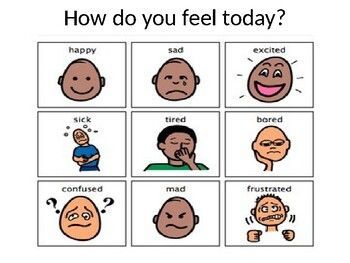Calm down, you’re okay! What does that really mean? If I would have told my three-year-old that in the middle of Target while she was screaming and melting down…. would she have known what I meant?
When you are having a really bad day, someone looks at you and says, “Smile”, you instantly feel like your problems are solved, right? So wrong. You feel like telling that person where to go, rolling your eyes or perhaps even using an unkind gesture.
The reality is being told to calm down or to smile is not validating or helpful in those moments. We are trying to be helpful telling a child to calm down or that it will be okay. Parents are saying this from a very kind and gentle place, just as the person telling us to “Smile” is. However, it is not always received as kindness. To that upset screaming three-year-old, it is very much not okay, and you certainly do not want to smile.

The trick is to show empathy and understanding of the other person's feelings. Showing a child empathy is the first step in helping them learn how to have and show empathy for other people. This comes from the idea of being able to honor a child sized problem. This could be having to stop the tablet in the middle of a show or animal crackers falling on the floor. Have you ever had your food drop to the floor? I once had a Thanksgiving pie fall on the floor as I pulled it out of the oven…. yes I cried! When we as caregivers can express to children our empathy for their feelings, we help them learn and grow from these challenging experiences. Labeling these emotions and what we see or hear as result helps teach children about feelings.
WHY ARE FEELINGS SO IMPORTANT?
We must be able to identify and label emotions before being expected to do something about their feelings. Many children are versed in three feelings - happy, mad and sad. If these are the only feelings they know, then these are the only feelings they can choose from when becoming unregulated. By broadening this “menu” of feelings they are then able to choose and identify with different emotions. If you ask a small child what they want from their favorite restaurant, a common response may be chicken nuggets, French fries and root beer. We can help our children expand this menu by letting them know there are more choices - yogurt, apples or carrots. Once they know there are more options, then they start to make new choices. The same is true for feelings. Once a child is able to expand their option menu or vocabulary, the child can start to feel emotions beyond happy, mad and sad.


HOW DO WE TEACH CHILDREN ABOUT FEELINGS?
There are many ways to teach feelings. Start by being open to talking about feelings. Talk about all feelings - the good and the “icky.” I never refer to any feeling or emotion as “bad” because it is okay to feel all of them. It is what the child does with the negative emotions that parents have concerns with for their child. Start by making a list of feeling words and then use them daily with children and yourself. Remember that part of working to help our children is also taking a look at ourselves. We are all constantly learning and growing. Some of my favorite feeling words to expand the list are:
- Excited (this is extra happy)
- Worried (thinking about something yucky that might happen)
- Frustrated (when you keep trying and trying and it just isn’t working)
- Curious (asking why and sometimes getting into things were not supposed to, wondering)
How many more can you and your child(ren) come up with?
Once you have this menu of new feeling choices, use them. It might sound something like this, “Sammie, I hear you crying, it sounds like you might be frustrated” or “Belle, I see you jumping up and down, it looks like you might be feeling excited.” This feels weird at first, but I promise you…. it works! Remember labeling what a child is feeling with what you are seeing and/or hearing as a result is the first step to helping with empathy and also assist with calming a challenging behavior.
HOW DO WE TEACH CHILDREN ABOUT FEELINGS?
There are many resources that can help with teaching children about feelings.
- Books there is a great list for young children at http://csefel.vanderbilt.edu/documents/booklist.pdf
- As you watch a movie or read a book together talk about how the characters were feeling, this increases comprehension
- Feeling journals - draw or write about feelings
- PBS kids has many resources that help explore feelings
- Sesame Street tool kits - there is one about resiliency and other special topics
- Feeling bingo
- Feeling matching game
- Watching videos about feelings
- And so many more…
Larissa Haring is Child and Adolescent Behavioral Health's Early and Middle Childhood program manager. For more information on C&A, call 330-433-6075.
The third of our four part blog posts on Preventing the Meltdowns by Keeping Your Cool is on Loving limits.

RECENT POSTS












